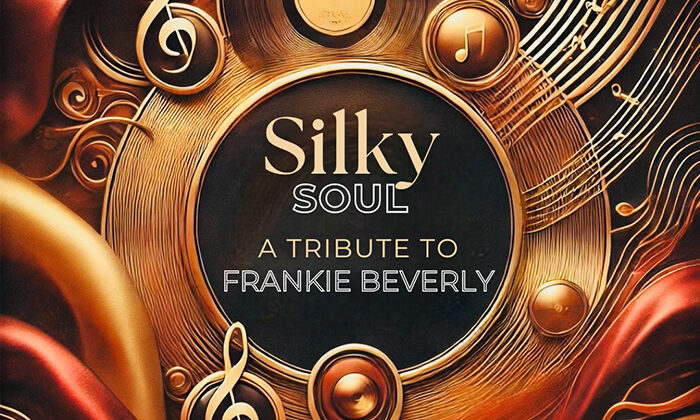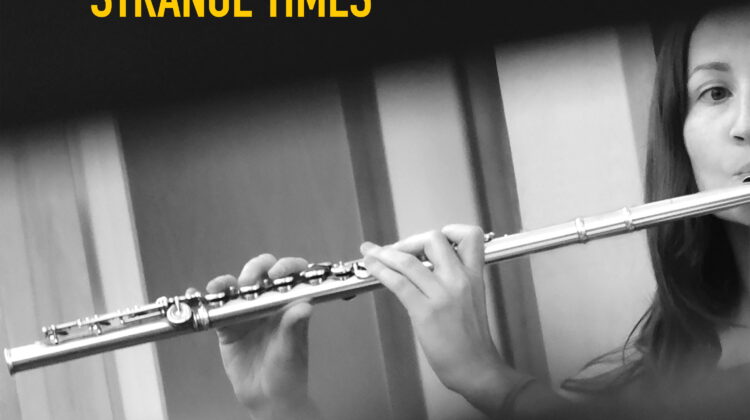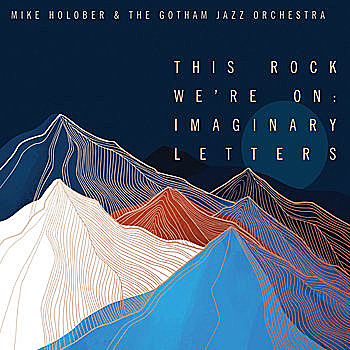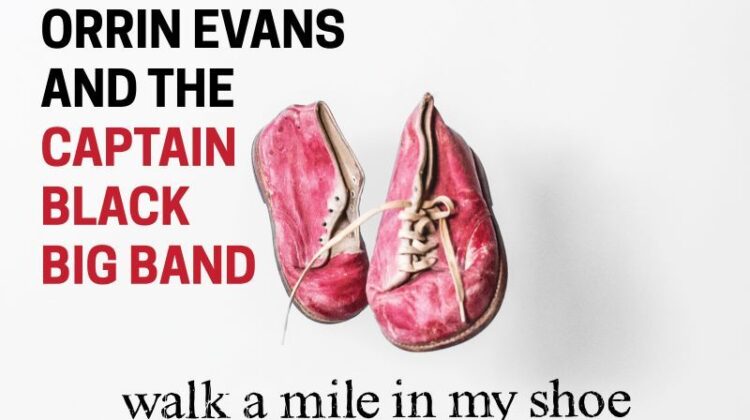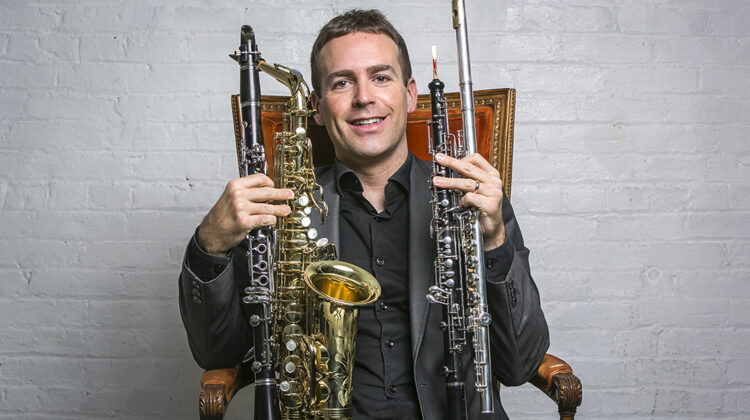Currently studying for her doctorate in clarinet performance at Indiana University Jacobs School of Music, Ana Nelson found the time to expand upon her earlier EP—with which she tested the reception of her music—with her first full-length album of original compositions: Bridges.
Based upon the absolute professionalism and musical distinctiveness that contribute to the originality of Bridges, let it be said that not only should jazz listeners be aware of Nelson and her group’s fully realized talents. Also, with her hoped-for wider recognition, Nelson’s second album should receive even broader acclaim.
She’s that accomplished.
It appears that Nelson will carry on the IU jazz tradition, as have other notable IU graduates like David Baker, Michael and Randy Brecker, Jeff Clayton, Jeff Hamilton, Peter Erskine, Jim Beard, Jerry Coker, Chris Botti, and Jamey Aebersold.
Slowly, discovery by discovery, Nelson is receiving positive comments from jazz musicians.
When Nelson won the Earl Hines Outstanding Soloist Award in New York, Wynton Marsalis commented: “Her playing showed emotional maturity, technical accuracy, harmonic sophistication, depth of understanding, beauty, range, thematic consistency, and someone whose playing moved us, inspires us. [She has] an original sound with a lot of feeling.”
Marsalis succinctly and accurately summarizes in one statement Nelson’s talent.
With the appreciation of another music educator, Christian Howes of Resonance Records—jazz violin virtuoso and founder of Creative Strings Academy—said that Nelson and Amanda Dame “are both high-profile performers and educators who are masters of their craft.”
And who’s Amanda Dame?
She and Nelson founded Virtual Woodwind Academy to provide conservatory-level online instruction for teaching adult amateurs how to play music. https://www.virtualwoodwinds.com/. In her free time, Nelson also works as an Associate Instructor with the Indiana University Soul Revue.
The first impression might be that Nelson may have been influenced by Milton Nascimento’s song, “Bridges,” [“Travessia”], especially since Nelson acknowledges the influence of Latin music upon her style. Instead, Nelson’s music involves the musical bridges—classical, jazz, and Latin—that she has discovered.
Who knows? As her journey continues, she may extend her bridges to Oriental, East Indian, aboriginal, Middle Eastern, and African music too, as did other jazz musicians like, say, Randy Weston.
On the first track, the excellent musicians on this album of Nelson’s compositions reveal immediately their innate feel for jazz and their top-notch abilities. As they look back in the future, they may consider Bridges to be the beginning their professional jazz careers.
“Wanderlust,” that first track, moves with a gently nudging forward motion through a gradual build-up. Nelson introduces her melody on alto saxophone as bassist Brendan Keller-Tuberg plays the harmony to her descending lines in a different metrical pattern—thereby providing a tumbling effect—from the first four measures in four/four. All the while, drummer Carter Pearson creates sonic textures as Nelson and pianist (and co-producer) Jamaal Baptiste improvise with the poise and confidence of seasoned professionals. Baptiste himself dynamically increases the temperature of the piece with technical precision, cascades of notes, oblique harmonies and flowing immersion into the feel of the music. The piece ends with a dreamy, soft, unresolved, sustained chord.
Nelson’s “Waltz,” entitled with unembellished directness, is tightly cohesive. Its displaced accents suggest the existence of a change of meter, although the piece remains in three. Again, Baptiste seems to provide the heat while Nelson provides the cool, his solos once again rising in intensity before being offset by Nelson’s tonal calmness. Keller-Tuberg once again emerges as an important element of the quartet’s sound—similar to, for example, Scott LaFaro’s to the Bill Evans Trio’s—when he solos with melodic ease. “Waltz” ends with Nelson and Baptiste prodding Pearson to deepen his drummed response to their repeated accented phrase.
Once again, after an impressionistic introduction, Nelson begins the melody of her gorgeous “LCB” on alto sax while Keller-Tuberg accompanies her with note-for-note harmony without the accompaniment of piano or drums. The rhythm begins when she plays a pedal point that Keller-Tuberg joins in unison. Then, Nelson moves on to play in major-key counterpoint. Tenor saxophonist Garrett Fasig, studying for his Master of Music degree at IU, enlarges the group to a quintet on this track. Nelson’s studies in classical music become evident when her counterpart, Baptiste, takes off with effortless elan to reveal “LCB’s” fugue origins. In the same way that it started, the performance ends with Nelson and Keller-Tuberg repeating the pedal point until it slows and fades.
Nelson wrote the lush composition, “Blue Flower,” to include a string quartet for enhanced richness. With swirling atmospheric suggestions and a medium tempo, “Blue Flower” reveals itself to be another waltz, but with different hues from “Waltz’s.” For one thing, “Blue Flower” is in a minor key, and Baptiste’s plunging bass-clef chords are reminiscent of McCoy Tyner’s. The sonic blend of “Blue Flower” reaches a more spiritual connection than the tracks that precede it.
As for Nelson’s Latin influences, “NelBap Choro” (I get it: Nelson/Baptiste’s Choro [or “Lament”]) adapts the cheerfulness of the Brazilian genre that, appropriately, values improvisation, counterpoint, and syncopation (which Nelson’s other compositions on Bridges include too). Baptiste’s style on this track is more restrained than it is on the others. It involves—oddly enough, without additional rhythm instruments—more comping (and thus, syncopation) and sustained chords as he provides the rhythm behind Nelson spry presentation of the melody. His solo, restrained as well, consists mostly of straightforward quarter notes and eighth notes, including a witty upper-register one-note plink! to end the piece.
Nelson concludes Bridges with a generational bridge as her father, Bill Nelson, performs with her on the hard-bop tune, “Fruit of the Groove,” which consists of modal shifts and a signature phrase of descending octaves. Ana Nelson chose to add to the track her influences from the IU Department of Music: bassist Jeremy Allen and drummer Steve Houghton. The joy arising from the opportunity and the sharing of spirited camaraderie, are unmistakably apparent.
If she so chooses, Nelson would easily be able to join the community of accomplished female jazz musicians on major labels, such as Maria Schneider, esperanza spaulding, Terri Lynn Carrington, Sherrie Maricle and the DIVA Jazz Orchestra, Bria Skonberg, Jane Ira Bloom, Hiromi, Mimi Fox, Kris Davis, Regina Carter, Patrice Rushen, Christine Jensen, Linda May Han Oh, Eliane Elias, Myra Melford, Mary Halvorson, and those in Artemis, among others.
It will be interesting to follow Nelson’s future endeavors as jazz journalists and listeners become aware of the high level of her musical talent.
Artist’s Web Site: ananelsonmusic.com


